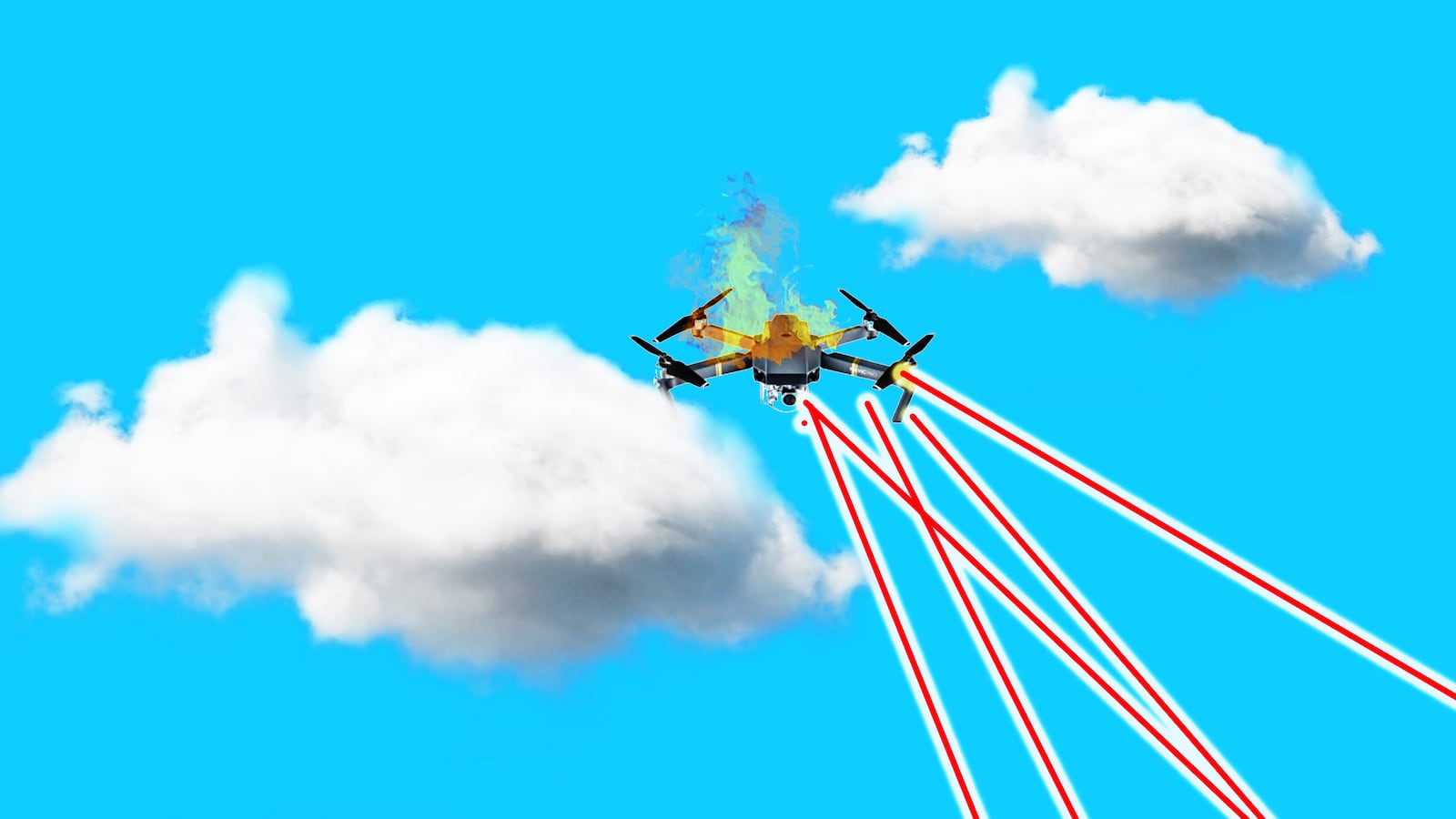The Chinese military has tested a laser designed to shoot down small drones. And it’s not alone. All over the world, armies are developing defenses against small, cheap unmanned aerial vehicles.
For good reason. Militaries, terror groups, and criminal gangs are increasingly using commercial-style drones to spy on—and even attack—their opponents. Stopping them is no easy task.
China test-fired its counterdrone laser in a trial in suburban Beijing on Nov. 26. An official military website published photos depicting the truck-mounted laser, a quadcopter target drone, the fiery impact of an invisible laser blast and the aftermath of the test—the quadcopter with a scorched, finger-width hole in its airframe.
“The defense system… can effectively prevent and control such problems as illegal flights of unregistered UAVs,” the website claimed, using an abbreviation for “unmanned aerial vehicle.”
The laser, which appears to be a five- or 10-kilowatt system, has obvious military applications. Small drones are becoming a serious military threat to armies everywhere. The U.S. military alone operates thousands of small UAVs for surveillance. Russian and Chinese forces are adopting drones of their own.
Perhaps more worryingly, Islamic State, Hezbollah, and other terror groups have begun strapping grenade-size explosives to off-the-shelf consumer-grade drones and sending them on bombing runs targeting soldiers and civilians.
The U.S.-led coalition in Iraq reported 100 encounters with ISIS drones over a two-month period in early 2017. “The drones are the main problem,” one Iraqi army officer said during bloody fighting in Mosul in February.
Apparently taking a cue from ISIS, at least one Mexican cartel has also armed small UAVs. In October, police in Guanajuato pulled over a truck evidently being driven by drug traffickers and containing assault rifles and a drone fitted with a bomb.
That small armed drones would proliferate “has been expected for some time now,” Robert Bunker, a fellow with Small Wars Journal, a military trade publication, told The Daily Beast. That’s forced governments to spend big on anti-UAV defenses.
In 2016 and so far in 2017 the Pentagon has spent no less than $200 million on urgent counterdrone systems. And that sum doesn’t include the billions of dollars the feds have invested in major weapons systems that have drone-killing capabilities, including a wide range of missile-, gun-, and laser-armed ground vehicles and ships, plus warplanes with sophisticated radio jammers.
In October 2016, then-Air Force Secretary Deborah Lee James told an audience in Washington, D.C, that the flying branch had recently “shot down” an ISIS drone using undisclosed “electronic warfare capabilities.”
Russia, for its part, recently established a ground-based electronic warfare unit specializing in defeating enemy drones. The unit’s powerful, truck-mounted radio emitters can sever the radio connections between unmanned aerial vehicles and their operators.
Despite such claims, it’s not at all clear that the new defenses are adequate. “Defending against [unmanned aerial systems] is a difficult task and no single solution exists,” the U.S. Army warned its air-defense troops in a new “Counter-Unmanned Aircraft System Techniques” manual that the ground-combat branch published in April.
Commercial drones are small, quiet, and nimble. Most worryingly for air-defense troops, off-the-shelf UAVs are cheap. You can buy one on Amazon for a couple hundred dollars and rig up a bomb for a few dollars more.
By contrast, a single Stinger missile—currently the Army’s main defense against small drones—costs $40,000. The U.S. Navy’s new ship-mounted drone-killing laser costs $40 million per system.
In other words, armies, militant groups, and cartels can buy far more drones than their opponents can buy counterdrone defenses. That’s a lesson the Chinese military could learn firsthand if it ever deploys its new drone-killing laser in actual combat.






